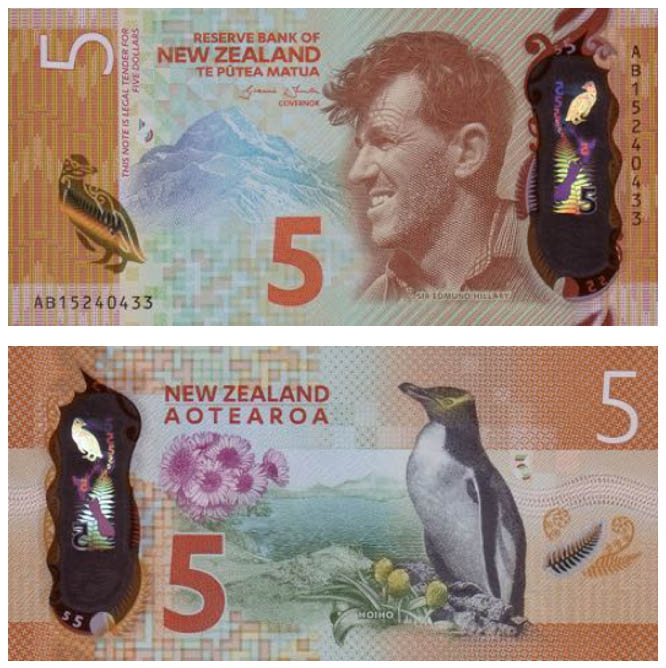
Headlines
News
CBN Designs and Prints 2015 Banknote of the Year
May 10, 2016 By PrintAction Staff
 The face of the New Zealand note features legendary New Zealand mountain climber Sir Edmund Hillary.
The face of the New Zealand note features legendary New Zealand mountain climber Sir Edmund Hillary. The Reserve Bank of New Zealand has won the International Bank Note Society’s 2015 Banknote of the Year Award based on the country’s recently introduced $5 polymer note designed and printed by Ottawa’s Canadian Bank Note Company (CBN). Polymer banknotes are increasingly popular because of durability and enhanced-security features.
The International Bank Note Society (IBNS) was founded in 1961 to operate as a non-profit educational organization to promote, stimulate and advance the study and knowledge of worldwide banknotes and paper currencies. The IBNS currently has over 2,000 members in more than 90 countries.
The 2015 Banknote of the Year Award was determined by its voting membership. Among 150 new banknotes released worldwide during 2015, members were able to consider around three dozen notes – from a record 20 countries – nominated for the award.
The IBNS stated that New Zealand’s $5 polymer note produced by CBN was a clear winner, while the runners-up were determined by a very tight vote, including: Sweden’s 20 Kronor note depicting children’s author Astrid Lindgren, Russia’s 100 Ruble note illustrating Crimean landmarks, Kazakhstan’s 20,000 Tenge note and Scotland’s (Clydesdale Bank) 5 Pound polymer note.
IBNS explains the Reserve Bank of New Zealand began releasing a new family of brighter money banknotes in 2015, beginning with $5 and $10 denominations: “Each stunning orange and brown $5 note displays a map of New Zealand in a gorgeous polymer window as well as numerous upgraded security features.”
The face of the New Zealand note features legendary New Zealand mountain climber Sir Edmund Hillary and South Island’s Mount Cook (Aoraki). A colour changing yellow-eyed (hoiho) penguin completes the face design. The back design again features this rare penguin unique to New Zealand, explains IBNS, as well as local flora. The New Zealand $5 is slightly smaller than U.S. banknotes but almost identical to the 20 Euro.
Print this page